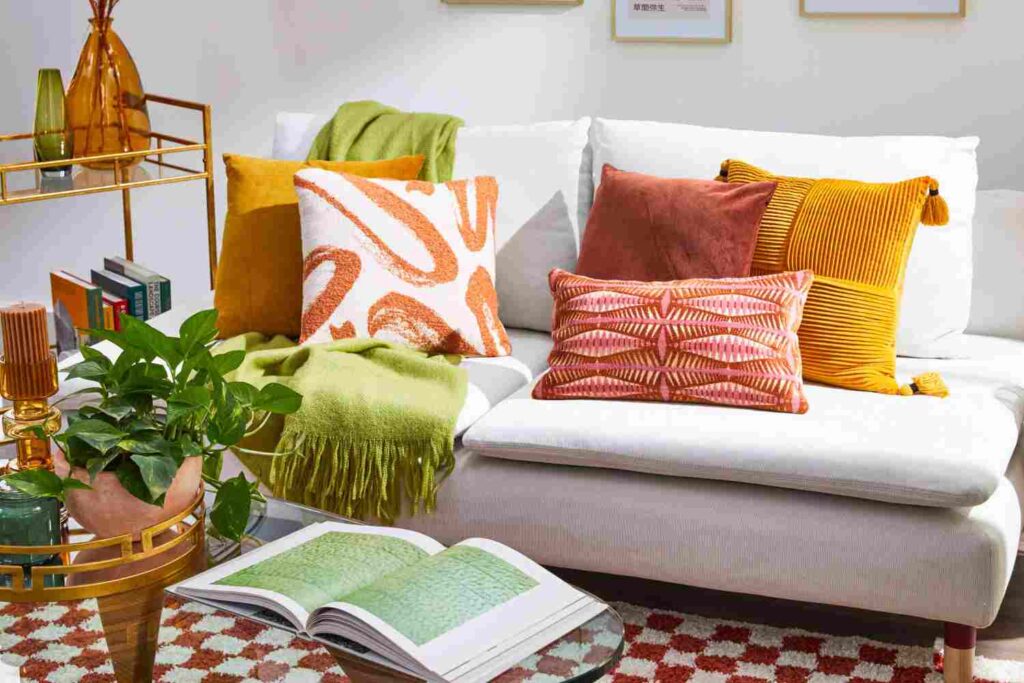
The question of how to choose a color for interior spaces is always one of the questions. The easiest way to colours selection is to discover your favorite colors.
Discover the colors you love. So you don’t stick to the traditional colour scheme home for a particular interior architectural style.
You can set your favorite color as your base color and create a color palette around it.
When it comes to designing the interior of your home, choosing the right color schemes in interior is crucial. The colors you select can set the tone and mood for the entire space. Whether you want to create a calming atmosphere or make a bold statement, there are countless color combinations to choose from. Here are some color scheme ideas for your next interior design project.
Exploring Personal Color Preferences: Tips for Discovering Colors That Speak to You
Colors can change the atmosphere of the place where they are used. You can understand how your mood changes according to colors and distinguish the tones you enjoy.
A Beginner’s Guide to Crafting a Color Scheme: Tips and Tricks
When creating a color scheme for the interior of a room, it’s essential first to consider the room’s purpose and the emotions you want to evoke. For example, choose calming colors like blues and greens to promote relaxation if you’re designing a bedroom.
On the other hand, if you’re designing a home office, choose energizing colors like yellows and oranges to promote productivity. By considering the actions that will take place in the room, you can choose a color palette that enhances the space’s functionality and overall aesthetic.

Answer these questions first when preparing a color scheme.
- What is the function and purpose of the space?
- What kind of mood do you want to create in that space?
- What colors will help you achieve this mood?
When you answer these questions, it will be easier for you to choose the right color. In other words, the purpose of space is the most critical question for us.
Color Schemes Interior with Neutral Colors
Neutral colors are a popular choice for interior design because they can create a calm and inviting atmosphere. Shades of beige, gray, and white can be used to create a timeless look that will never go out of style. These colors also provide a great backdrop for other accent colors that can be added through furniture and accessories.

Creating a color scheme with neutral colors in your interior design can be a great way to achieve a calm and sophisticated look. Here are some steps to create a neutral color schemes:
- Choose your base color: Select a neutral color that you want to be the dominant color in the room. Some common neutral colors include white, beige, gray, and taupe.
- Select different shades: Once you have your base color, choose different shades of that color schemes to create depth and interest. For example, you can use light gray walls with a darker gray sofa and gray curtains to create a layered effect.
- Mix and match textures: To add visual interest to your neutral color scheme, use a variety of textures in your design. For example, you can use a plush velvet sofa, a woven rug, and linen curtains to create a layered and textured look.
- Add accent colors: While neutral color schemes typically use just one color, you can add accent colors.
- Consider the lighting: The lighting in a room can affect how colors appear, so consider the type and placement of lighting when creating a neutral color scheme. Natural light can enhance neutral colors and bring out warmth, while cool artificial light can make them appear more gray or cool-toned.
Creating a neutral color scheme in your interior design can be a great way to achieve a timeless and sophisticated look. By choosing different shades of your base color, incorporating textures, and adding accent colors, you can create a layered, interesting, calming, stylish design.
Bold Colors

If you want to make a statement with your interior design, consider using bold colors. Vibrant hues like red, orange, and yellow can add energy and excitement to a space. These colors work best in smaller doses, so consider using them as accent colors on furniture, artwork, or accessories.
Bold colors are typically bright and saturated, such as hot pink, bright orange, or deep purple. Choose one or two bold colors that you want to feature in your design.
To create a balanced look, incorporate neutral colors into your design. White, gray, and black are classic neutral colors that can help balance out the bold colors and prevent your design from feeling overwhelming.
Monochromatic Colors

Monochromatic color schemes use different shades of the same color to create a cohesive look. For example, you could use light blue on the walls, dark blue on the furniture, and navy blue on the accessories. This creates a harmonious and calming atmosphere.
Creating a monochromatic color scheme in your interior design can be a great way to achieve a cohesive and calming look. You can create depth and visual interest in your space by choosing different shades and textures of the same color.
Analogous Colors

Analogous color schemes use colors that are next to each other on the color wheel. For example, blue, green, and purple are all analogous colors. These color schemes are pleasing to the eye and create a sense of harmony in the space.
To create a cohesive look, decide on one of the analogous colors to be the dominant color in your design. This color can be used on walls, large pieces of furniture, or in a bold accent piece.
Use the other analogous colors as accents throughout the room. This can be in the form of throw pillows, curtains, rugs, or artwork.
Complementary Colors
Complementary color schemes use colors that are opposite each other on the color wheel. For example, blue and orange are complementary colors. These color schemes create a dynamic and energetic atmosphere, making them great for spaces where you want to add a pop of color.
To create a cohesive look, decide on one of the complementary colors to be the dominant color in your design. This color can be used on walls, large pieces of furniture, or in a bold accent piece. Use the other complementary color as an accent throughout the room; this can throw pillows, curtains, rugs, or artwork.
Warm Colors
Creating a color scheme with warm colors in interior design can help create a cozy and inviting atmosphere. Here are some steps to create a warm color schemes:
- Choose a warm base color: Start by choosing a warm base color for the room. Warm colors include reds, oranges, yellows, and browns. Picking colors you love that will set the tone for the room.
- Choose complementary colors: Once you have chosen your base color, select complementary colors to enhance the room’s warmth. Complementary colors are colors that are opposite on the color wheel. For example, if your base color is red, its complementary color is green. Other complementary color combinations include orange and blue and yellow and purple.
- Use different shades: To create depth and interest in the room, use warm colors. For example, if you have chosen red as your base color, consider using shades of pink and burgundy. Using different shades of warm colors can help create a cohesive color schemes.
- Use neutral colors: To balance the room’s warmth, use neutral colors such as white, beige, or gray. These colors can be used for walls, floors, and furniture to create a neutral backdrop for the warm colors.
- Consider the lighting: Lighting can have a significant impact on the warmth of a room. Use warm-colored light bulbs to enhance the warmth of the color schemes. Additionally, consider using natural light as much as possible, as it can help bring out the warmth of the colors.
Warm colors like red, orange, and yellow can create a cozy and inviting atmosphere. These colors are great for spaces where you want to create a sense of warmth and comfort, such as living rooms or bedrooms.
Cool Colors
Cool colors like blue, green, and purple can create a calming and soothing atmosphere. These colors are great for spaces where you want to create a sense of relaxation, such as bathrooms or bedrooms.
Start by choosing a cool base color for the room. Cool colors include blues, greens, and purples. Choose a color that you love and that will set the tone for the room.
Once you have chosen your base color, select complementary color schemes to enhance the room’s coolness. Complementary colors are colors that are opposite on the color wheel.
For example, if your base color is blue, its complementary color is orange. Other complementary color combinations include green and red and purple and yellow.
When choosing a color scheme for your interior design project, it’s important to consider the overall mood and atmosphere you want to create. Whether you choose neutral colors or bold hues, make sure the colors work together to create a cohesive look. With these color scheme ideas, you can create a space that is both beautiful and functional.




Im pretty pleased to find this web site. I wanted to thank you for your time for this wonderful read!! I definitely appreciated every little bit of it and I have you book-marked to look at new things in your web site.
I like the efforts you have put in this, regards for all the great content.
Very good information. Lucky me I ran across your blog by chance (stumbleupon).
I’ve bookmarked it for later!